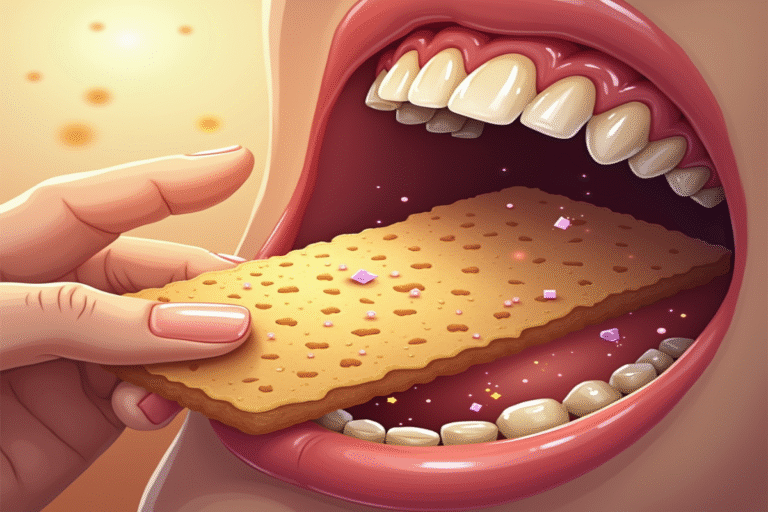Have you ever wondered why a plain cracker starts tasting sweet if you hold it in your mouth long enough? That’s not just your imagination—it’s your saliva working its chemical magic! While most of us think digestion begins in the stomach, the truth is even more fascinating: the breakdown of your meal starts the moment food enters your mouth.
The Remarkable Composition of Saliva
Your saliva isn’t just water. This seemingly simple fluid is actually a sophisticated mix of chemicals, each with important roles:
- Water (98-99%) – Acts as the fluid medium for enzymes
- Salivary amylase – The main enzyme for breaking down carbohydrates
- Mucus – Lubricates food for easier swallowing
- Bicarbonates and phosphates – Buffer acids to maintain optimal pH
- Immunoglobulins – Offer immune protection
- Lysozyme – An antibacterial enzyme that helps protect against oral infections
Amylase: The Enzyme That Breaks Down Your Breakfast
The most active digestive component in saliva is salivary amylase (historically called ptyalin). This enzyme specifically targets carbohydrates—those starches in potatoes, bread, pasta, and rice. Amylase breaks complex carbohydrate chains into smaller units like maltose, and eventually glucose.
Here’s what happens: When you bite into a piece of bread, amylase immediately attacks the chemical bonds (called glycosidic linkages) that hold starch molecules together. It snips these long chains into smaller pieces. These smaller carbohydrate fragments are what create that subtly sweet taste when you keep starchy foods in your mouth.
The Perfect Environment for Early Digestion
Your mouth provides ideal conditions for amylase to work:
The pH of saliva typically ranges from 6.2 to 7.6—slightly acidic to slightly alkaline. Salivary amylase works best in this near-neutral environment. Interestingly, once food moves to your stomach, the highly acidic environment (pH around 2) deactivates amylase, temporarily pausing starch digestion until food reaches the small intestine.
Beyond Breaking Down Food
Saliva’s role in digestion goes far beyond its enzymatic activity:
- Taste enabler – Food molecules must be dissolved in liquid to bind with taste receptors. Without saliva, taste is greatly diminished!
- Food lubricant – Forms a slippery bolus that slides easily down your esophagus
- Protective buffer – Neutralizes acids from food and drink, protecting tooth enamel
- First line of defense – Contains compounds that fight harmful bacteria
The Speed of Salivary Digestion
How fast does this oral digestion work? Remarkably quickly! Researchers have found that salivary amylase begins breaking down starches within seconds of contact. In fact, by the time you swallow a mouthful of mashed potatoes, up to 30% of the starches may already be broken down into simpler sugars.
Fascinating Saliva Facts
Your body is a saliva-producing machine, generating between 0.5 to 1.5 liters daily—that’s about 2 to 6 cups! The process speeds up when food is present, which is why simply smelling or thinking about delicious food can literally make your mouth water.
The concentration of amylase in human saliva is higher compared to many other mammals. This difference likely evolved as humans began eating more starch after the agricultural revolution. People from populations with historically high-starch diets often have more copies of the amylase gene and produce more of the enzyme.
A Symphony of Digestive Steps
Next time you enjoy a meal, take a moment to appreciate this unnoticed first act in the digestive symphony. The chemical breakdown beginning in your mouth is a remarkable adaptation that helps us efficiently extract energy from our food. From mouth to esophagus, stomach to intestines, your digestive system works in perfect sequence—and it all begins with that first bite and the remarkable chemistry of your saliva.





